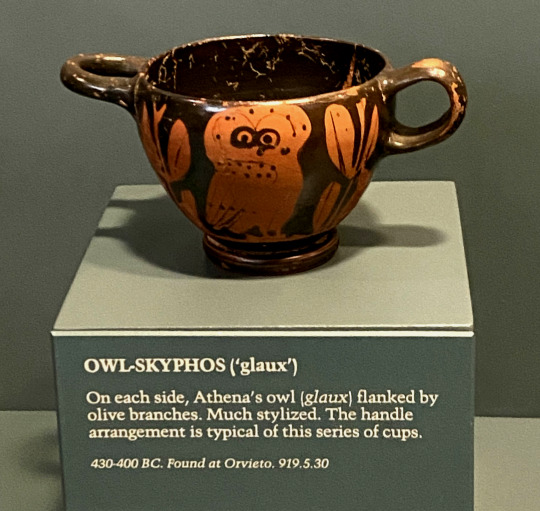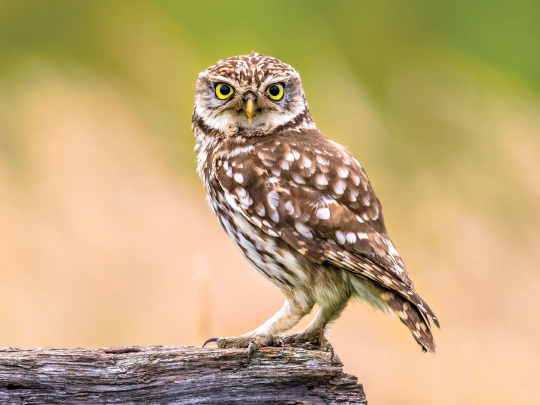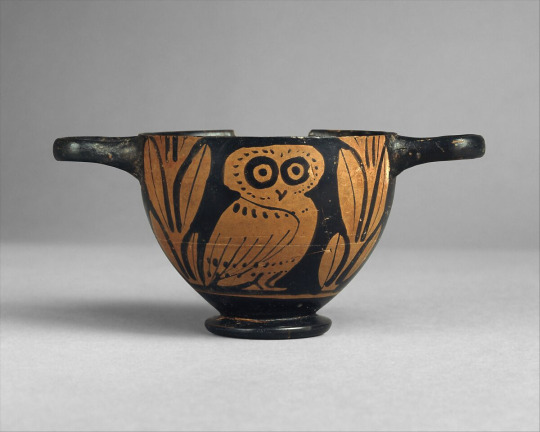Witchy religious blog of "Jane Knight" ♡ Syncretic Heathen (Norse Heathenry & Hellenic Polytheism) ♥︎ genderfluid aroace closeted novice polytheist, animist & witch in their late 30s ♥︎ icon is my cat ♡ still need an introduction
Don't wanna be here? Send us removal request.
Text

+°Sleipnir*+
559 notes
·
View notes
Text
One thing new pagans/new witches should be aware of from the get go is that paganism and occultism are not synonymous. Polytheism and occultism are not the same either.
511 notes
·
View notes
Text

Barn owl
6K notes
·
View notes
Text
Travel Altars: Athena
A guide to travel altars for Athena. Please tell me if you want a certain deity covered!
In this guide, I’m assuming you’ve added a tea-light or LED candle. It isn’t necessary, but it’s not going to be included in any of these guides. I’m also going to be assuming you’ve added a photo of the deity and prayers. These guides will not include those, either.
Owl Charms
Owl Figurines
Small Books or Notebooks
Pens
Quills
Ink
Crochet or Knitting Hooks
Yarn
Lapis Lazuli
Mini Helm
Mini Shield
Toy Soldiers
Small Crafts
See more deities here.
127 notes
·
View notes
Text
Travel Altars: Ares
A guide to travel altars for Ares. Please tell me if you want a certain deity covered!
In this guide, I’m assuming you’ve added a tea-light or LED candle. It isn’t necessary, but it’s not going to be included in any of these guides. I’m also going to be assuming you’ve added a photo of the deity and prayers. These guides will not include those, either.
Sword, Shield, Helmet, etc. Figurines
Pocket Knife
Vulture Figurines
Green Army Soldier Toys
Dog Tags
Old Coins
A Small Jar of Chili Powder/Flakes
Steel
Thorns
Medals
Small Strategy Games
Serpent Figurines
Geodes
Spiky Jewelry
Playing Cards
See more deities here.
#knight's religion#hellenic polytheism#helpol guides#travel altars#ares#grimoire#it's still tuesday#tysdagr
149 notes
·
View notes
Text
Another gem from my latest ROM visit that filled me with immeasurable glee:

Look at that little owl!! He's so goofy and cute and so dear to me and so so very clearly a LITTLE OWL (Athena Noctua) which is, of course, the species of owl that represents Athena

Look at how small that little guy is:

Athena holding a helmet and a spear, with an owl. Attributed to the Brygos Painter (c. 490–480 BC). The Metropolitan Museum of Art. And, look at these incredible further examples cute little owls in pottery:

Armed owl. Attic red-figure Anthesteria oinochoe, ca. 410–390 BC

Skypho with Owl between two branches of olive wood. Attic red-figure pottery. Archaeological National Museum of Spain.

Attic red-figure kylix, owl between two olive branches. Found in the Mengíbar Necropolis. Archaeological National Museum of Spain.

Owl skyphos. From Most na SočI, end of the 5th century BC. Tolmin Museum.

Owl skyphos. Attic, mid-5th century BCE. The Metropolitan Museum of Art.

Terracotta rim fragment of a kylix. Attic, dating 480–470 BCE. The Metropolitan Museum of Art.
I just wanted to share these because they also always make me smile. One of my favourite things about going to the museum has always been looking at sculptures and pottery.
538 notes
·
View notes
Text
Prayers to the gods are traditionally spoken aloud. In fact, the word for prayer euchesthai also meant to boast and to let out a victorious cry of triumph. The gods will always hear even the softest of entreaties, but a loud prayer is a way to draw attention to oneself.
There were three ways to pray to different gods:
Ouranic (Olympian) Gods: standing with arms outstretched and palms upward
Oceanic Gods: standing with arms outstretched toward the sea, palms turned toward a cult image (statue, item, figure etc)
Khthonic (Earthly/Underworld) Gods: on the ground, pounding the earth with fists
Kneeling down to pray is unusual. The gesture of entreaty is outstretched arms. To invoke the heavenly gods, both hands are raised to the sky with upturned palms; to call on the gods of the sea, the arms are extended out to the sea; the hands are also stretched toward the cult image. […] Special measures are required, however, if the dead or the gods of the underworld are to be reached. Poets describe how the suppliant hurls himself on the ground and hammers the earth with fists.
- Greek Religion, Walter Burkert
541 notes
·
View notes
Text
Nymph Worship
Nymph: singular, a nature spirit in the Greek pantheon
Nymphai: plural form of nymph
First, let’s talk about what a Nymph is. A nymph is usually described as a ‘lesser’ Goddess in Hellenism. They tend to be localized nature spirits, though that’s not the only type of Nymph out there. What does that mean for your worship? Well, it means that most Nymph worship is going to be for the specific Nymphai in your area. While you may choose to worship some more famous Nymphai and ones from other areas, you’re likely to find that there are plenty in your own area that you can worship as well.
Types of Nymphai:
Here are some types of nymphs connected to nature:
Alseides (nymphai of glens and groves)
Anthousai (flower nymphs)
Asteriae, the (stars)
Auloniades (nymphai of pastures)
Aurai, the (breezes)
Crinaeae (nymphai of fountains)
Daphnaeae (laurel tree nymphai)
Dryades (nymphai associated with trees)
Epimeliades (nymphai of highland pastures, protectors of flocks)
Haliai (nymphai of shore lines)
Hamadryades (oak nymphai)
Heleionomai (nymphai from wetlands)
Hesperides, the (nymphai of sunset)
Hyades, the (celestial nymphai of the constellation Aquarius)
Leimakides (nymphai of meadows)
Limnades (nymphai who reside in lakes)
Meliades (apple tree nymphai)
Meliai (nymphai of honey, bees, and ash trees)
Naiads (fresh water nymphai)
Napaeae (mountain valleys)
Nephelai, the (clouds)
Nereids (ocean nymphai who are the daughters of Nereus)
Oceanids (ocean nymphai who are daughters of Oceanus)
Oreads (nymphai of grottoes)
Pagaeae (nymphai who belong to springs)
Pleiades (yup, like the constellation)
Potameides (river nymphai)
The second type of Nymphai are those who are associated with cities, or who serve in retinue to a specific Theos. Such as:
Lampades (torch bearer nymphai in retinue to Hekate)
Maenads (nymphai in retinue to Dionysos)
For the purpose of this post I’m going to talk about the Nymphai connected to the earth and nature.
Named Nymphai
Some Nymphai are specifically named in myth. These are usually Nymphai who are associated with specific plants, but also one’s who’ve played a role in a Theos’ story at one point or another, and one’s who are patrons to specific towns and cities. This is just a sampling of some of the Nymphai who are named in myth.
Aba- Naiad of the town Ergisce in Ciconia, Thrace
Aigeiros- Hamadryad of black poplar
Asopis- Naiad Nymph of a town by the same name
Balanos- Hamadryad of evergreen oak
Bateia- Naiad of Sparta in Lacedaemonia
Daphne- Naiad who became the laurel tree
Io-Argive Princess and Naiad who was loved by Zeus
Karya- Hamadryad Nymph of nut trees, including hazelnut, walnut, and chestnut
Khloris- Oceanid and Goddess of flowers
Klytie- Oceanid who loved Helios and transformed into the heliotrope flower when He left Her
Kraneia- Hamadryad Nymph of cherry trees
Leuke- the white poplar tree
Lotis- Naiad who transformed into the lotus
Minthe- A Naiad who was transformed into the mint plant
Morea- Hamadryad of mulberry trees
Pitys- Oread Nymphs who transformed into the pine tree
Ptelea- Hamadryad of elm trees
Syke- Hamadryad of fig trees
How to Worship Nymphai: Building a Shrine or Altar
When you’re talking about worship in Hellenism, a lot of people think about shrines and altars, since they give us a place to actually give offerings. Altars were historically built with the idea in mind of “how do I get this offering to the Theos it belongs to?” That means that Ouranic (heavenly) altars were raised up towards the sky. Khthonic (relating to the earth and death) altars were usually dug into the ground as the Khthonic Theoi were thought to reside under ground.
Altars for entities like Heroes and Nymphai were kind of odd. Some people would build them as khthonic altars, some people would build them as Ouranic, and it was’t uncommon to find that their worship was mixed with elements of both Ouranic and Khthonic ritual. Shrines and altars to the nymphai were almost exclusively built outside though from what I’ve seen. They were also built near where a Nymph was thought to reside when possible.
Personally, I like to have my altar for the local Nymphai outside, and raised up, similarly to how Ouranic altars are built. You don’t have to do it that way, it’s just the way I handle it. I also try to build any altars dedicated to the Nymphai with natural materials. So, for example, an altar for the local Nymphai in my area may be a flat stone on the edge of the forest near my home.
Giving offerings
Since Nymphai are regarded as living in or around the area where you would be making offerings, the need for Ouranic ritual, which is designed to send the offerings upwards, isn’t really there. There’s two ways I’d say you could approach this.
The first would be that you can give offerings in a khthonic manner, since Nymphai are khthonic in their connection to the Earth. This would mean pouring libations to the soil, and either burning or burying other offerings.
The other way you can approach offerings is to simply set any offerings before your altar or shrine, and leave them there for the Nymphai. An example of this would be to set an apple on your shrine as an offering, and leave it for a set amount of time before cleaning it up. If you are leaving offerings outside in local habitats be sure that you're using foods or plants already native to the area, and things that won't poison any animals who might eat it up.
Personally, I follow khthonic ritual when giving offerings to the Nymphai. I pour libations into the soil, I bury fruit, and I give the offering in it’s entirety to the Nymphai. I don’t consume any of what is meant for the Nymphai. Again, you don’t have to do things the way I do.
Types of Offerings
Any of the classic offerings can be given to Nymphai. These include:
Bread
Cheeses
Fruits
Flowers
Grains
Honey
Incense
Meat
Milk
Olive Oil
Statues (please don't be littering and leaving statues in the woods though)
Wine
You can also give them offerings from the surrounding area. If you have blueberries that grow wild in the area, then blueberries may prove to be a great offering. Again, I suggest sticking with things that are natural. Since Nymphai are nature spirits, giving them something plastic may not go over real well, especially if you’re leaving the offering outside in nature. Basically, be sure you’re not littering and leaving things that aren’t going to decompose when leaving offerings in nature. And please make sure you're not accidentally introducing invasive species of plants via fruit/seeds/ect.
Devotional activities would probably relate closely to the Nymph in question, though I do have a few general ideas.
Clean up the area where you believe the Nymph resides
Get involved in local conservation efforts
Go on nature walks and admire the influence and beauty of the Nymphai in your area
Nymphai and Prophecy
Nymphs, like many rustic deities, were considered to be connected to prophecy. Nympholepts were devotees of local Nymphai who also worked as prophets. Astragaloi, a form of divination using knuckle bones from sheep, was popular for communicating with Nymphai, and sets of astragaloi bones have been found in multiple caves where Nymphai were worshiped.
That’s certainly not the only option you have though when approaching Nymphai with the intent of divination and prophecy, and a little exploration and trial & error may turn up local Nymphai willing to communicate via other methods of divination.
#hellenic polytheism#knight's religion#nymphai#nymphai worship#helpol guides#animism#helpol rituals#helpol worship#grimoire#divination#witchcraft#< tagging for that last part
2K notes
·
View notes
Photo

-
#hellenic polytheism#knight's religion#art#helpol art#ares#now this is ares#the greek deathless spirit and embodiment of chaotic and bloody war#the LAST war god you want to arrive at a protest#ask him for courage; ask him for strength or self-control — he can grant such things from a great distance away#but do not invite him to a peaceful event#you do not want Literal War to show up at the peaceful protest#that being said#hail to you mighty ares! 🍺
6K notes
·
View notes
Text
Those "modern fairy tales where the princess saves herself" types of books not only misrepresent the gender roles in fairy tales (there are tons of stories where girls get to save the day), but they fundamentally misunderstand the entire genre.
Fairy tales aren't about saving yourself.
These aren't epic myths or heroic legends about the great warriors who slay every monster in their path because they're so awesome. Fairy tales are almost always about ordinary, even incompetent, people who get thrown into strange situations where they only succeed because of the help of others.
It's not a gendered thing. The boy who goes off to seek his fortune is usually the dim-witted third son whose older brothers are the strong, smart ones. The third son succeeds because he is kind to the magical helpers who then complete the tasks for him--and the exact same thing happens when a girl is the main character.
The characters in a fairy tale rarely succeed because they embrace their own strength and take their own path. Much more often, they are told step-by-step what to do, and they succeed because they obey--respecting the wisdom of others.
The core virtue of a fairy tale is not pride, but humility. It's not a story about the strong, but those who are weak, small, helpless. The people who can't do it all on their own, but can recognize the worth and wisdom of others.
Turning this story into a "girl power" (or even a "boy power") story warps it into something that is fundamentally the opposite of a fairy tale, and it has nothing to do with the gender of the main character.
7K notes
·
View notes
Text
Polytheist asks!
To spice up the end of your Yuletide season ^^

Were you born into your faith? If not, how did you discover it?
What draws you to your Gods? What do you like about them?
Is your practice more ritualistic or casual? What does it look like?
How do you picture the universe? What is your idea of its cosmology?
Do you believe in spirits, angels or demons?
Are there Gods you willfully don’t follow? What are the reasons behind this choice?
What does your ideal altar look like?
What are some of your stronger UPG’s?
Do you have a patron/matron? How did you choose them?
If you could have a direct conversation with your deity/deities right now, what would you tell them?
Do you pray? If so, what do your prayers look like?
How important is mythology in your practice? How much credit do you give it?
What are some devotional acts you actively engage in?
How would you define your Gods? (have fun with that one)
Are you faithful to one specific pantheon or is your belief more eclectic?
How do you communicate with your deities the best?
Do you associate certain Gods with specific songs? Share them!
What are your thoughts on godspousing?
How have your Gods affected your life?
List a few of the deities you worship and associate each with a quote your think represents them best!
Feel free submit any of these questions in my ask box too, I do want to share in the fun! 🥺

Artwork
#ask game#i doubt i'll get any asks#my blog is still pretty new and this is just a reblog#but these would make for great journal entries anyway#hellenic polytheism#norse heathenry#knight's religion#journal prompts#grimoire#polytheist asks
893 notes
·
View notes
Note
Oi, Vocês podem adorar os daemones como adoram os deuses? Ou eles são secundários como os Santos cristãos por exemplo? Desculpe por associar tudo ao cristianismo, É que ele foi a única educação religiosa que tive.
Khaire, philos!
Então, sobre os daimones, acho que antes de começar a responder é válido dizer que compreendemos a confusão. A ótica da monolatria é difícil de deixar de lado, mas é necessário quando nos propomos a entender algo em seu próprio contexto.
Então, ok, vamos começar definindo - o que são daimones, afinal?
Daimones são seres imortais, geralmente considerados como intermediários entre pessoas e Deuses geralmente. O conceito pode parecer simples, mas ele fica complicado bem rapidinho por questões de tradução: Muitas vezes, vários Deuses são chamados de daimones, o que nos faz expandir a noção de daimon para algo maior.
Existem vários Deuses que podem ser entedidos como personificações divinas de certos aspectos da existência e da natureza: Morte (Tânato), Sono (Hipno), Amor (Eros) Esperança(Elpis), Sonho(Os oneiroi), Vento(Os anemoi) - todos aqui citados são exemplos de Deuses que também são considerados daimones.
E além dessas noções, também vemos o termo daimon sendo empregado para quaisquer manifestações semidivinas ou divinas de espíritos em geral. O Agathos Daimon (Bom Espírito), que nos acompanha, aconselha e cuida, por exemplo, é tido como um ser imortal conselheiro e provedor de sabedoria, prosperidade e proteção.
Assim sendo, o termo daimon se refere a manifestações divinas em variados graus. Não temos uma hierarquia rígida, mas muitos deles são cultuados e honrados desde os tempos antigos. A existência e pluralidade dos daimones reforça nossa ideia de uma religião animista - O mundo que habitamos está recheado do divino, com Deuses e espíritos imortais movendo a existência ao nosso redor.
13 notes
·
View notes
Text
Ancient Greek Religion & Hellenic Polytheism: A Reading Guide

I’ve been wanting to make something like this for a long while, and talking to my friend @olympianbutch today gave me the push I needed to do so. When I was starting out as a Hellenic Polytheist years ago, this is the kind of resource I needed. So I hope you all enjoy and find this helpful!
Introductory Reading:
Ancient Greek Religion by Jon D. Mikalson
Athenian Popular Religion by Jon D. Mikalson
Greek Religion by Jan N. Bremmer
On Greek Religion by Robert Parker
Hellenic Polytheism: Household Worship by LABRYS
Comprehensive Guides:
Greek Religion by Walter Burkert
Companion to Greek Religion edited by Daniel Ogden
Understanding Greek Religion by Jennifer Larson
Rethinking Greek Religion by Julia Klindt
The Oxford Handbook of Ancient Greek Religion edited by Esther Eidinow and Julia Klindt
Polytheism and Society by Robert Parker
The Gods and Theology:
Ancient Greek Cults by Jennifer Larson
Theologies of Ancient Greek Religion edited by Esther Eidinow, Julia Klindt, and Robin Osborne
Underworld Gods in Ancient Greek Religion by Ellie Mackin Roberts
Gods and Heroes of the Ancient World (Routledge Series)
Offerings and Sacrifice:
Personal Experience and Materiality in Greek Religion by K.A. Rask
Singing for the Gods by Barbara Kowalzig
Smoke Signals for the Gods by F.S. Maiden
Sharing with the Gods by Theodora Suk Fong Jim
Primary Sources:
Theogony & Works and Days by Hesiod
The Homeric Hymns
The Orphic Hymns
Sources for the Study of Greek Religion by David Rice and John Stambaugh
Greek Religion: A Sourcebook by Valerie M. Warrior
Ancient Greek Religion: A Sourcebook by Emily Kearns
#knight's religion#hellenic polytheism#helpol resources#resources#helpol books#grimoire#book lists#religious books
2K notes
·
View notes
Text
hellenic polytheism: good resource posts from tumblr
tumblr should not be a one stop shop for information about hellenic polytheism! however, these are some amazing posts i've found that come with a wealth resources from across the site.
hellenic witch and magic reading list
ancient greek religion and hellenic polytheism: a reading guide
hellenism resources
hermes google drive
hellenic polytheism - free (and reliable) resources
added:
hellenic polytheism - free (and reliable) resources: updated
hellenic polytheism grimoire
would love to see if others have posts they suggest as well.
#hellenic polytheism#helpol resources#helpol books#witchcraft#witchcraft books#resources#masterposts#religious masterpost#religious books#knight's religion#grimoire
926 notes
·
View notes
Text

Art
"After that the Æsir feared that they should never be able to get the Wolf bound. Then Allfather sent him who is called Skírnir, Freyr's messenger, down into the region of the Black Elves, to certain dwarves, and caused to be made the fetter named Gleipnir. It was made of six things: the noise a cat makes in foot-fall, the beard of a woman, the roots of a rock, the sinews of a bear, the breath of a fish, and the spittle of a bird. And though thou understand not these matters already, yet now thou mayest speedily find certain proof herein, that no lie is told thee: thou must have seen that a woman has no beard, and no sound comes from the leap of a cat, and there are no roots under a rock; and by my troth, all that I have told thee is equally true, though there be some things which thou canst not put to the test."
The Gylfaginning, chapter 34
Hail Fenrir!
87 notes
·
View notes
Note
hello! do you have any resources on Ares, Hermes, and/or magic in Ancient Greece? ive seen a couple PDFs you’ve shared about Ares but I’m always hunting for more
I do! You’ll find Hermes and Ares mentioned in Ancient Greek Magic too, because they’re best friends and both have beautifully unique roles in it too. Unfortunately they both lack scholarship, but I’ll see what I can provide.
Ancient Greek Magic
Free Ancient Greek Magic/Witchcraft Books - a gift/masterpost I did
The Magic of Homeric Verses
Ares
The Oracle and Cult of Ares in Asia Minor
War and the Warrior: Function Of Ares in Literature and Cult
Hermes
Hermes as Master of Lions at the Syme Sanctuary, Crete
Both
Ancient Greek Cults
I hope these help!
#knight's religion#resources#hellenic polytheism#ares#hermes#helpol resources#grimoire#helpol books#religious books#witchcraft#witchcraft books#war and the warrior was a good read#kinda thinking of stepping back from tumblr and focusing on reading more mythology and academic books like that one for a bit#edit: lol nvm but i will stop reading and reblogging things like deity guides#they're often full of misinformation and mistranslations
162 notes
·
View notes
Text
My Drive Resource Libraries
Feel free to download, share, etc. I found most everything through open access journals, JSTOR, Anna's Archive, sci-hub, pdfs shared on other sns, etc.
Greek Polytheism & Hellenism
Roman & Italic Polytheism
Gaulish & Gallo-Roman Polytheism
Celtiberian Polytheism
#knight's religion#resources#religious resources#hellenic polytheism#helpol resources#grimoire#others' religions#roman polytheism#italic polytheism#gaulish polytheism#celtiberian polytheism#gallo-roman polytheism#religious books#helpol books#books on other religions
616 notes
·
View notes